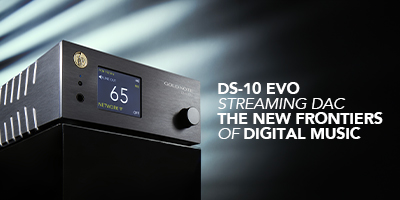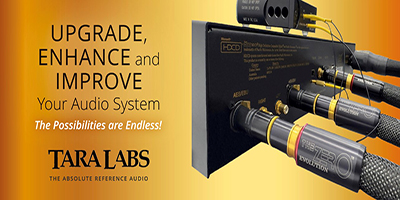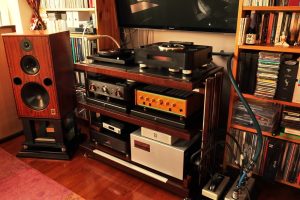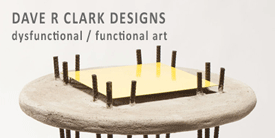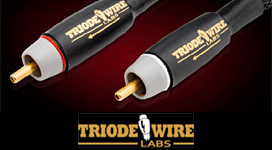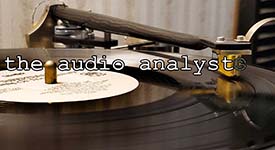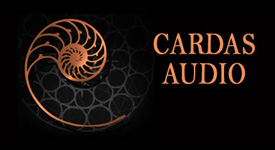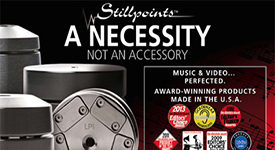Roger Skoff writes about your system and the state of our hobby
I was talking recently with a friend of mine (also a HiFi Crazy, also in the Industry) about the future of our hobby, and we came to one of those "forehead-slapper" moments—you know, when something finally occurs to you that should have been "tripping-over-it" obvious a long time ago. In other words, a "no brainer."
It might very well be that one of the major reasons why our hobby is losing people and not gaining new ones is that, even many of the people who are already "in"—who already have systems and may even have spent a lot of money for them—might not be getting all the musical thrills and enjoyment they've paid for and have every right to expect.
Now, right off, I can tell you that the quality of the equipment they bought is probably not the reason. Even the least of today's HiFi gear is pretty good (even including some of the "mid-fi" stuff). It's just that in far too many instances it's not set up to make the sound that the system is capable of.
And now, again: I'm not just talking about the system not getting the kinds of parts or maintenance it needs to keep it operating at peak performance. What I am talking about is just basic system set-up—Simple stuff like "What goes where?" or "Which plugs into what?"
Our (I and my friend's) "guts-ball," absolutely subjective, and non-scientific or statistically-based estimate is that more than half—maybe even as many as 60%—of the systems we've seen and heard over the years suffer from easily visible, completely obvious set-up problems that limit their performance and keep their owners from getting all of the enjoyment they've paid for.
Unquestionably the most common of those has to do with speaker placement. For whatever reason, possibly due to aesthetic choices, speakers will be placed too close together (often tightly flanking the equipment rack in imitation of the cheap mid-fi systems of yore). Either that (or sometimes also), the speakers are set flush with the back wall, instead of out into the room, where they have a hope of imaging and won't be affected by the artificial bass boost that being set against the wall creates.
If you ever look at the systems proudly displayed on Facebook, you'll notice that very often they consist of great equipment in a beautiful room, graciously decorated, and can't possibly sound good.
I've seen systems placed with the furniture, at least in the picture, so that there's no possible way that anyone could ever sit anywhere near the imaging/soundstaging "sweet spot," and I can't even begin to count the number of system photos I've seen where that beautiful room is all windows or hard surfaces, completely overlooking or ignoring the fact that that will affect the sound. And often, there's not even a throw rug on the floor in front of the speakers to absorb some "first bounce" energy.
Another thing I've seen is an LP setup where the turntable is actually sitting on one speaker! Either the owners must like their music played quietly, or they enjoy the howl of acoustic feedback. Whichever it is, they're not getting the full benefit of their system.
There's a lot of stuff like that that can affect the sound of your system. Even things that people do thinking that it's going to make it work or sound better.
With LPs, for example, many people (including me before I knew better) set the tracking force on their tonearm too low (less than what the cartridge manufacturer recommends), thinking that that will reduce record wear. It doesn't, and may even, because of needle "chatter," do the opposite. Whatever else it does, though, the stylus won't track properly, the sound will suffer, and—on great boomy stuff like the cannons on Tchaikovsky's 1812 Overture, the stylus can leap out of the groove and scratch its way across the record.
Still another whole category of performance killers, even with good equipment, comes simply from the seemingly almost universal failure of people to recognize that their listening room is not just the location for their system but an active and contributing part of it, so they keep throwing money at expensive new gear when the solution to their performance problem might really lie in relatively inexpensive acoustical treatment—or even in just moving the furniture!
Some of the most important lessons people—even grizzled old HiFi Crazies—can learn is that published loudspeaker performance specifications (taken from testing in an anechoic chamber) may bear little resemblance to the performance of those same speakers in an actual listening room; that how any other product spec's out or is reviewed may have little or no bearing on how it actually sounds in their own room, or as evaluated according to their own tastes and preferences; and that just because any set of components gets high marks from even the best reviewers doesn't mean that those components will work well with each other and be good-sounding together. Two of the worst systems I've ever heard were put together entirely from Stereophile top recommended components.
Despite all that I've just said, though, this article isn't really about how to make our systems better, but about the consequences of many systems not being as good as they could and ought to be.
Think of all of the people who have spent money to buy a system and, because of nothing more than how or where it's placed or set up, have never heard its full performance. To my mind, the greatest joy of high fidelity sound reproduction lies in its ability to recreate the image and acoustic space of the original recording venue—to make you feel like you're right there in the recording room with the performers, listening to music being made. What, though, about people who don't know how or don't take the trouble to properly place their speakers? That particular glory will be gone and, except for the bass, they might as well be listening to their television set. And even the bass that the speakers are capable of won't be made if the listening room is too small or the woofers aren't properly placed in it (close to one wall gives some bass boost; set in a corner gives even more) Bass boost can be good, bad, or indifferent, depending on the speakers and the listener's preference, but whichever way is wrong for that listener is wrong.
What if—as it apparently is for the average person—the HiFi experience isn't the deeply involving wonder and glory that a truly great, truly well-set up system (or even a well set up just good one) can be? How are people going to get excited by it? How are their friends going to be so impressed that they'll want a system, of their own? Why would they even show it off to their friends if they're not blown away by it themselves?
Committed audiophiles, knowing what's possible, will work and learn and try to bring their system to the point where—regardless of how actually good it may be or how much or little it cost—it's giving them its all, and to do that is fun for them. (I once, many years ago, wanted to give my sister a system and wanted to spend just $500 for the whole thing. Obviously, it wasn't great, but it was surprisingly good, quite enjoyable, and great fun to do.) Committed audiophiles are what's keeping our hobby and industry alive, but they know what's possible and will work to achieve it.
What, though, about all the people who don't know how good it can be, so they accept the mediocre sound of what they've got and don't try to improve it, but just assume that that's as good as it gets? What if they don't have any system at all; why would they want to get one?
Seems to me to be a tail chaser, where people don't get the most from their systems because they lack the knowledge or interest to make them perform the way they ought to, so the system isn't exciting or important to them, so they don't try to make it better and don't make it a hobby and don't show it off to their friends, who also never find out how good great music played in great sound can be. And the friends, if they do buy something to play music on, won't expect much from it, and won't take the trouble and acquire the knowledge to bring whatever they bought up to its full potential, but will just accept whatever it does as whatever it can do. And around and around.
What we need is a paradigm shift, and the best way that can happen is for us, first, to get our own systems as good as they can be—not even necessarily by spending more money, but just with proper setup. And then, when we've got our own systems working at "show off" level, let others hear them and be blown away. too. It's not just dealers that can do this, all of us can. and when we do, maybe we can start a tail chaser in the other direction.
Cartoons by Bruce Walker.

